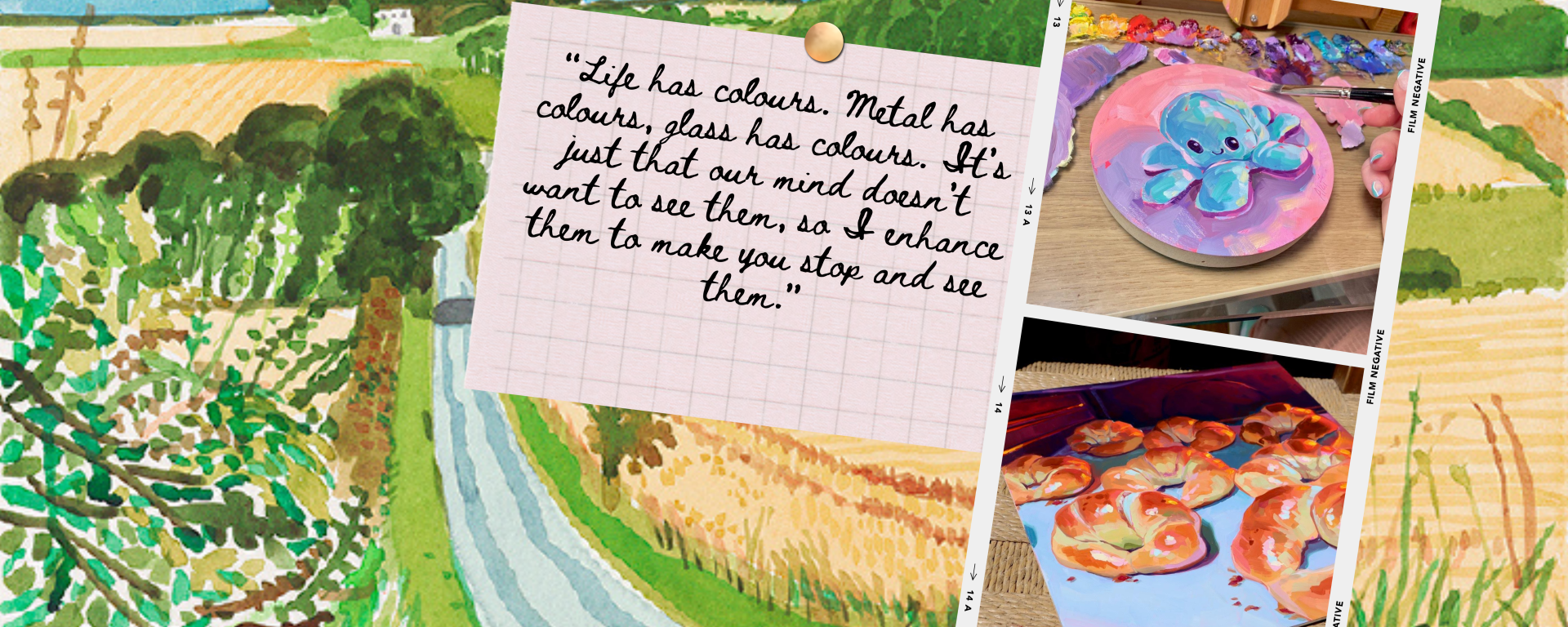Alai Ganuza, 29, is a contemporary oil and digital painter based in Basque Country, Spain. Although she now is a full-time painter and has enjoyed creating art since she was a young child, she wasn’t always an artist.
At university, Alai studied physics – another passion of hers besides painting – and “art just appeared in a bad moment” in her life, which helped her find herself again. Once things got better, Alai realised that she wanted to pursue art as more than just a hobby, considering that it has always been there for her.
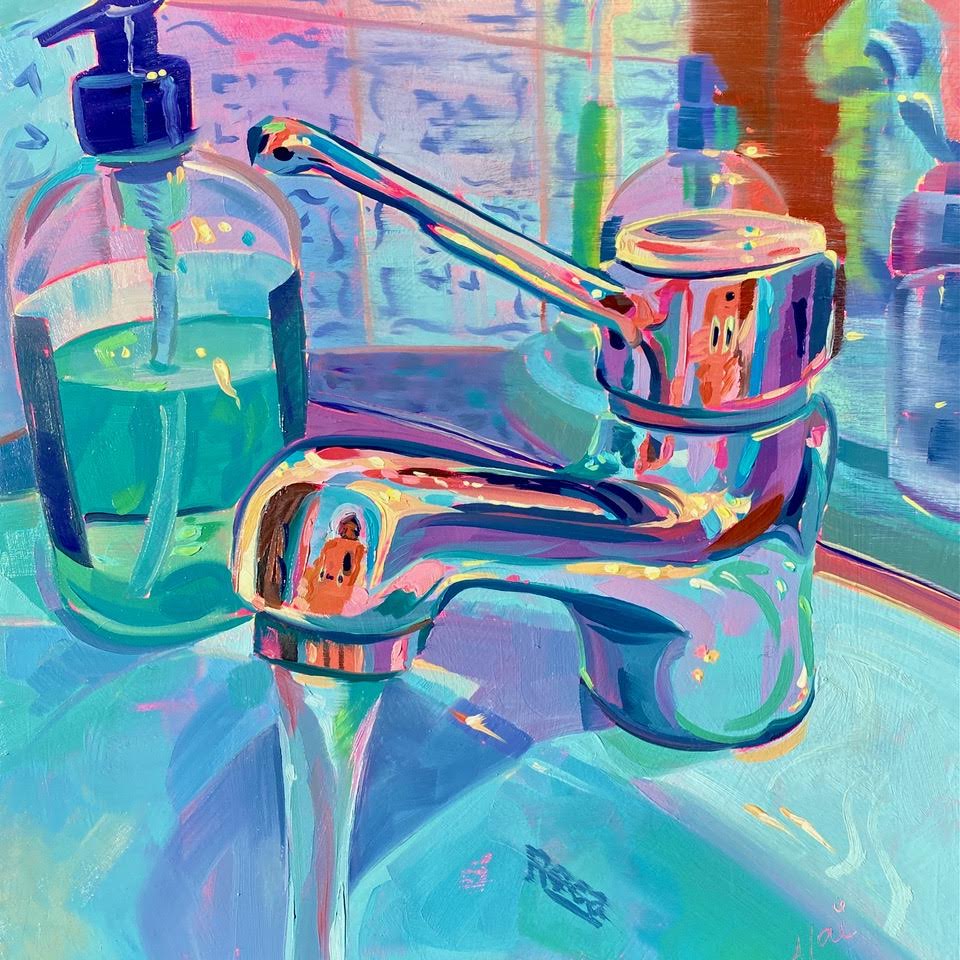
When Alai turned 22, she changed her degree and began her studies at the University of Basque Country. As a Fine Arts student, she learned a lot about the history of art, colour theory, and the different materials and techniques that encompass art as a whole. While it was an illuminating time for her, she still didn’t know what she wanted to do with all of this newfound knowledge.
Believing the famous myth about art that “the more realistic [it is], the better,” Alai started creating paintings based on realism. Still, it wasn’t fulfilling enough; she realised that there was something missing. She craved vibrancy and colour. As a result, she began to slowly unlearn creating in a photorealistic style.
However, this was a tough change: she sold commissioned portraits at local stores, and her clients wanted paintings to be realistic – without any fun colours or expressionistic brushwork. Alai recalls that it was a nice opportunity as it allowed her to keep learning about art and, despite the challenge, painting realistically was something that “kept pushing her.”
It was in 2020, when Covid-19 hit, that Alai decided to focus on art that truly mattered to her and made her happy. She changed her focus and directed her attention toward painting small, simple things, such as fruits and home items, as “daily objects and mundane things that surround us” are what spark her imagination.
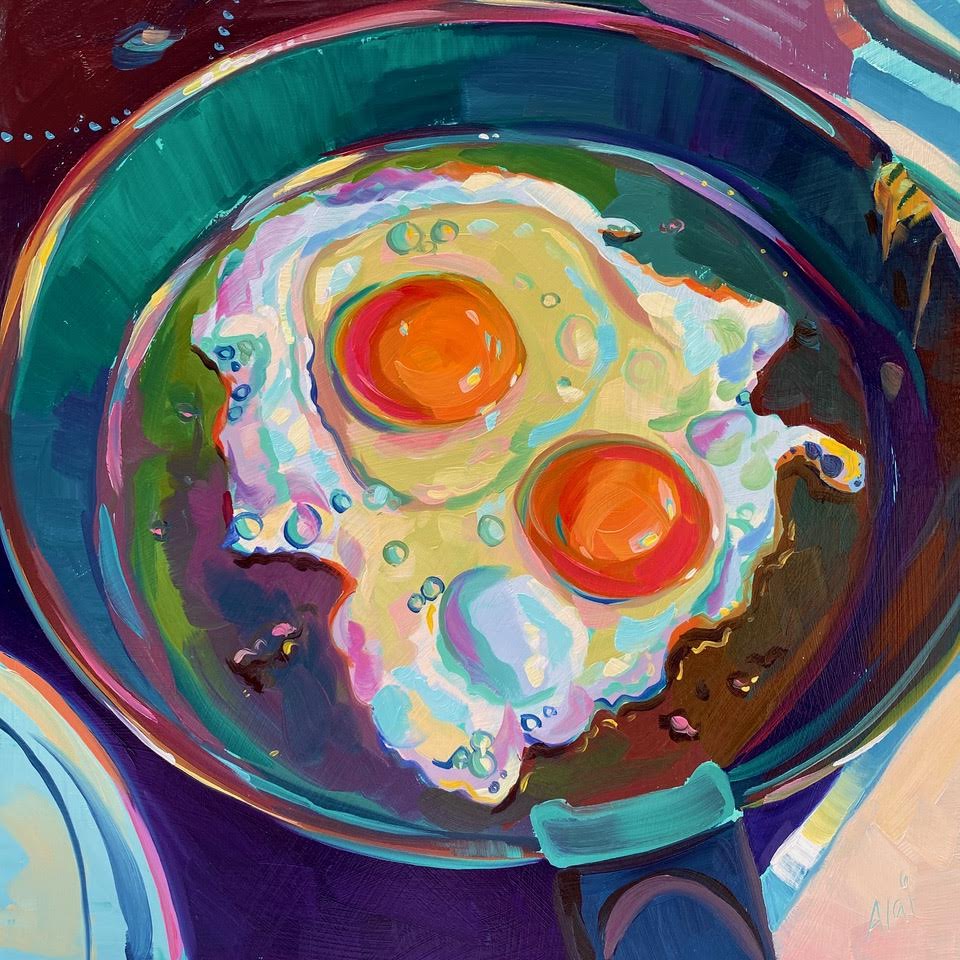
While inspiration does not always come lightly, Alai has several streams from which she draws her creativity. “Mornings, when the sun is just rising” is Alai’s favourite time to paint. Other than that, her artistic choices are influenced by things that bring her joy, such as the ordinary things she finds in her home. A favourite subject of hers, uniquely, is eggs.
“Eggs make me happy,” says Alai, “they are so funny and painterly!” She also enjoys painting sinks, because “who wouldn’t want a sink of mine at their house?”
Alai tries to not think much about what she is going to paint; as part of her process, she uses a few photos for references but otherwise she paints “a bit blind to avoid being biased” towards realism.
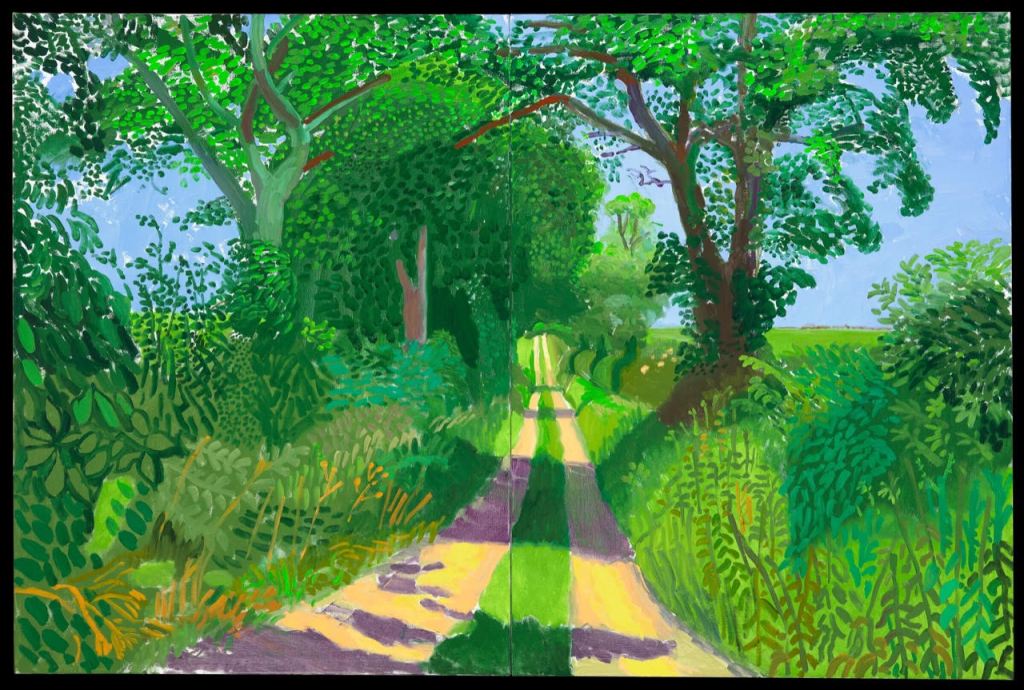
Besides objects, Alai’s art is also fueled by two painters: David Hockney and Lucian Freud. Specifically Hockney’s realism but impressionist use of colour and Freud’s brushwork. Two of her favourite paintings of theirs are Early July Tunnel and Man in a Chair.
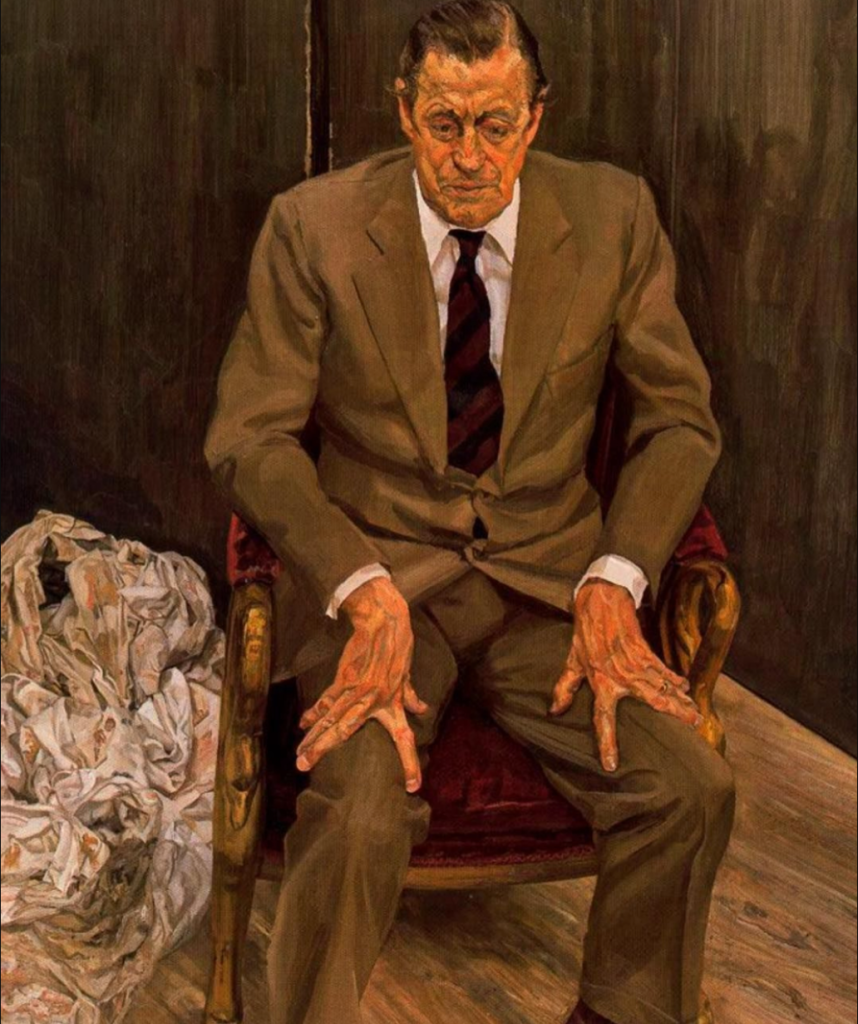
When asked about whether the pandemic has influenced her art in some ways, Alai replied that her plan, which was to stay at home and work for herself until she figured out what she would like to do, “was the same with or without the pandemic.” The pandemic actually “forced” her to stick to this plan of hers and, in the end, staying at home ended up helping her turn her home into her workspace.
Having a workspace to feel comfortable in is a must for a hard worker like Alai, who works almost every day to create art and provide help to newbie artists. The whole purpose behind her work is “to break art myths” and to sell and show her art around the world by teaching individuals more about it. To do this, she frequently creates YouTube tutorials as well as crash courses on Domestika.
“I teach in oils […]. The main goal of the course is to teach my colour theory and to teach you that you can paint fast and stay motivated, and frequently it’s easier than thought.”
Even though Alai is also a digital painter, she prefers working with oil: “Everything I pursue on digital is to achieve an oil feeling,” nothing beats “working with physical paint and having a physical, unique product afterwards.”
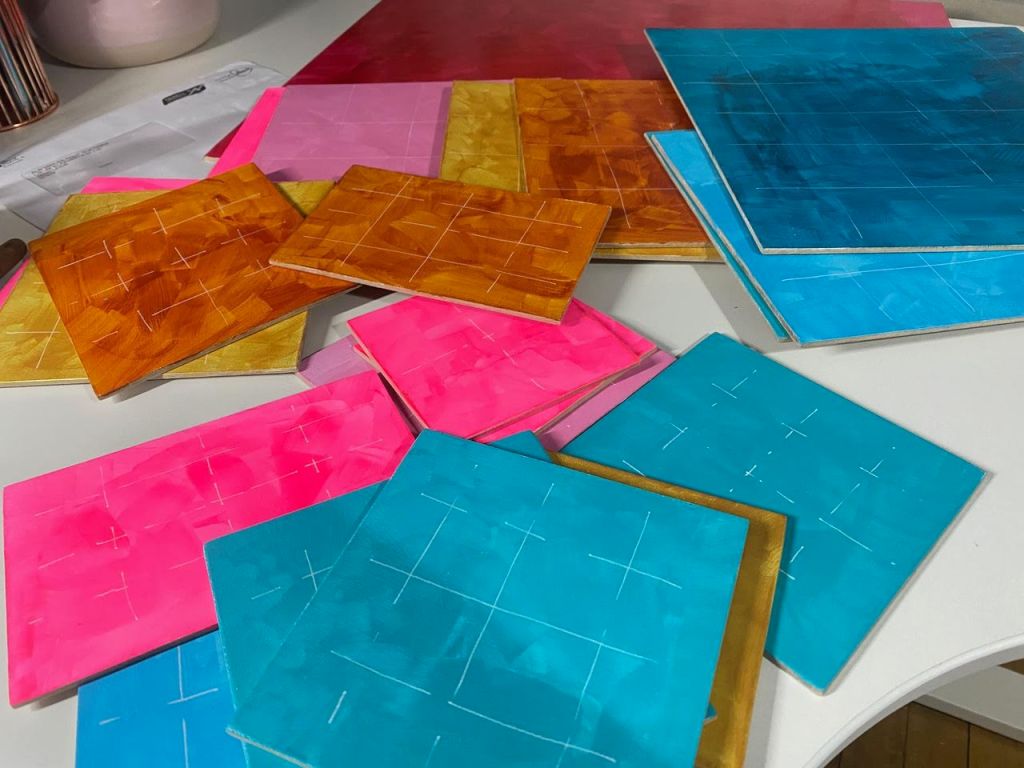
While Alai paints on canvases and paper, too, she mainly uses wood as her base, with mediums such as Galkyd and Liquin, both used to increase transparency and gloss, or Gamsol, which thins out oil paint. Alai sometimes uses acrylic paint for her base as well, for priming and varnishing.
Typically, Alai prepares her panels or canvases before she even knows what she will paint; she cuts, sands, and applies gesso followed by a colour base. After finding a subject to paint, she sketches – sometimes freehand, sometimes grid – and then paints, “usually just in one session.”
Despite having moved on from photorealism, an aspect of realism that Alai retains in her paintings is familiarity; she wants her objects to be easily perceived. Otherwise she finds herself enhancing the object’s real colours, something that realism kept Alai from exploring before. Now she uses the oil and digital mediums in a “looser, bolder, more colourful” way.
“Alai in Basque means ‘happy,’ and that’s precisely what I want to convey in my paintings [with vibrant colours].” To create such liveliness, Alai intensifies colours that are already there, but that we don’t normally notice: “Life has colours. Metal has colours, glass has colours. It’s just that our mind doesn’t want to see them, so I enhance them to make you stop and see them.”
The richly colourful outcome is achieved by the alla prima technique. Alai starts by mixing some of her main colours and then continues mixing “on the go”, so as to not waste too much paint.
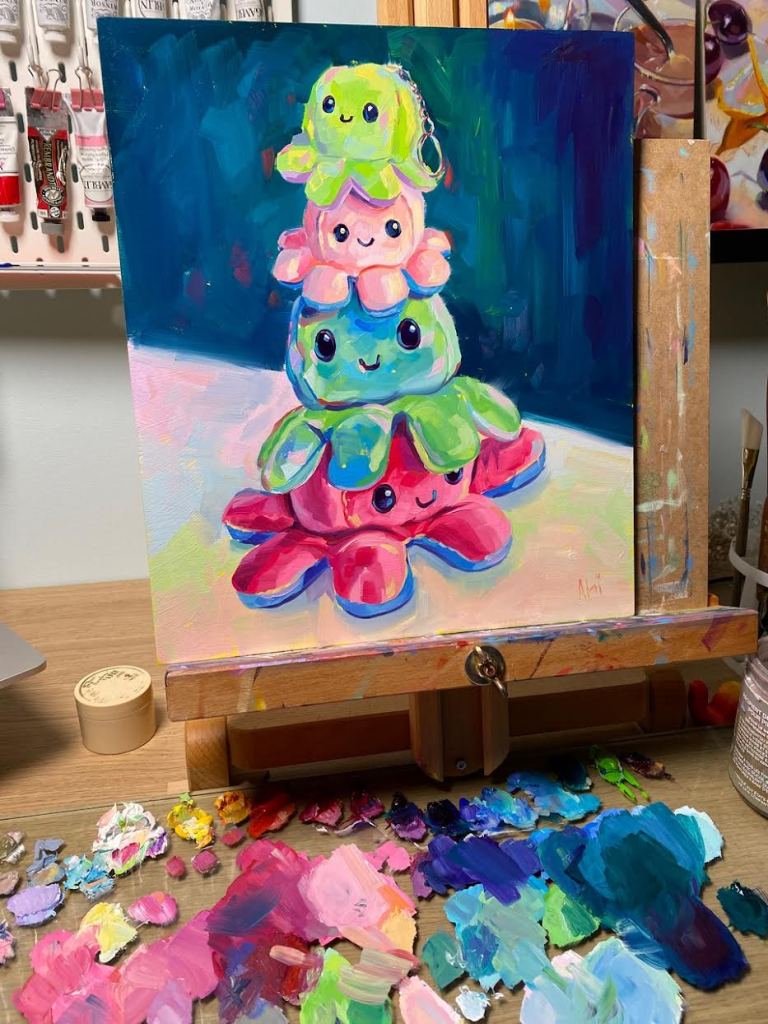
However, not enough colours in the world could mask the hardships that come with being an artist.
One of the hardest things is “trying to keep life and work separated,” as “when your passion is your work you usually work 24/7.” The “ambitious career” of an artist usually involves a lot of collaborations, “thousands of projects” and having responsibility for everything, including accounting, editing, creating and cleaning.
“You have to work, work, work and sometimes life is forgotten.”
There is also a lot of risk that comes with being an artist – you never know how your art will fare and you could lose a great deal; Alai recalled a recent art fair which required a lot of expenses. The bottom line is that sometimes, you may fail more times than win. However, that doesn’t mean that “the myth” that “art doesn’t pay the bills” is true. In fact, it’s far from it. “It’s extremely difficult and you have to work hard,” said Alai, but “you can do it.”
To make the phrase a little more accurate, she tweaked it to: “Art is one of the most difficult work fields to make a living from.”
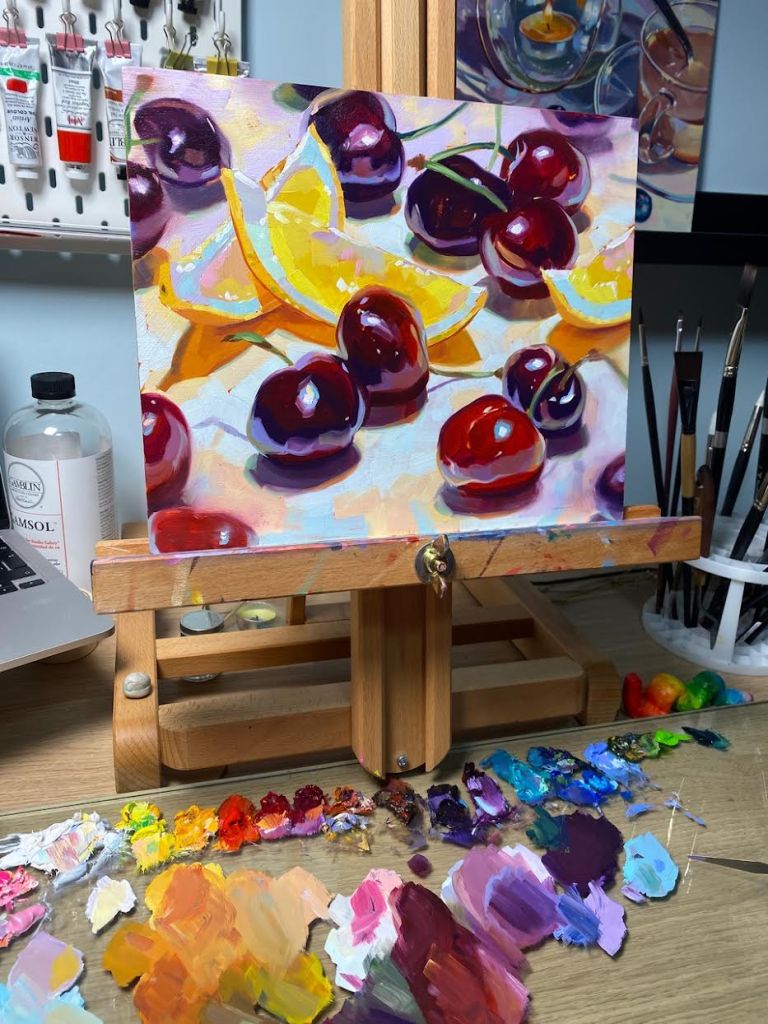
Even then, perhaps the most truly difficult aspect of being an artist is the self-criticism that comes with it. Alai has grown out of caring much for the criticisms of others as she realised that she no longer needs to prove herself to them, but “self-criticism is another thing” entirely.
“We are our worst enemies and we shouldn’t listen to ourselves,” Alai remarked. “We’re painters. We are learning constantly, so if something isn’t perfect, that’s fine, too.”
Being an artist requires a lot of time, effort and patience, so creating art under the influence of intrusive thoughts or stress can be detrimental.
As Alai said, “if this is a common behaviour and you have the habit to be mean to what you’re doing or working on, the key is to take some distance, change dramatically what you’re doing, and focus on other things until you feel the urge to go back again.”
Forcing yourself to work will usually lead to you burning out and only cause more harm than good. Listen to your body. When you feel like it needs a break, take it. Do something else, or even just relax. Calm your mind before continuing. “Clear minds work better.”
It’s important to not give into self-criticism and believe your negative thoughts; they will only keep you from your art and your happiness. The fact that “art keeps us sane” and “makes us go further” is something Alai believes with all her heart.
To hold onto something we love, be it art or something else, can help save us from all our thoughts, especially the darkest ones.
Featured Image Credit: David Hockney’s “Roads and Cornfields, East Yorkshire” and Alai Ganuza’s paintings
